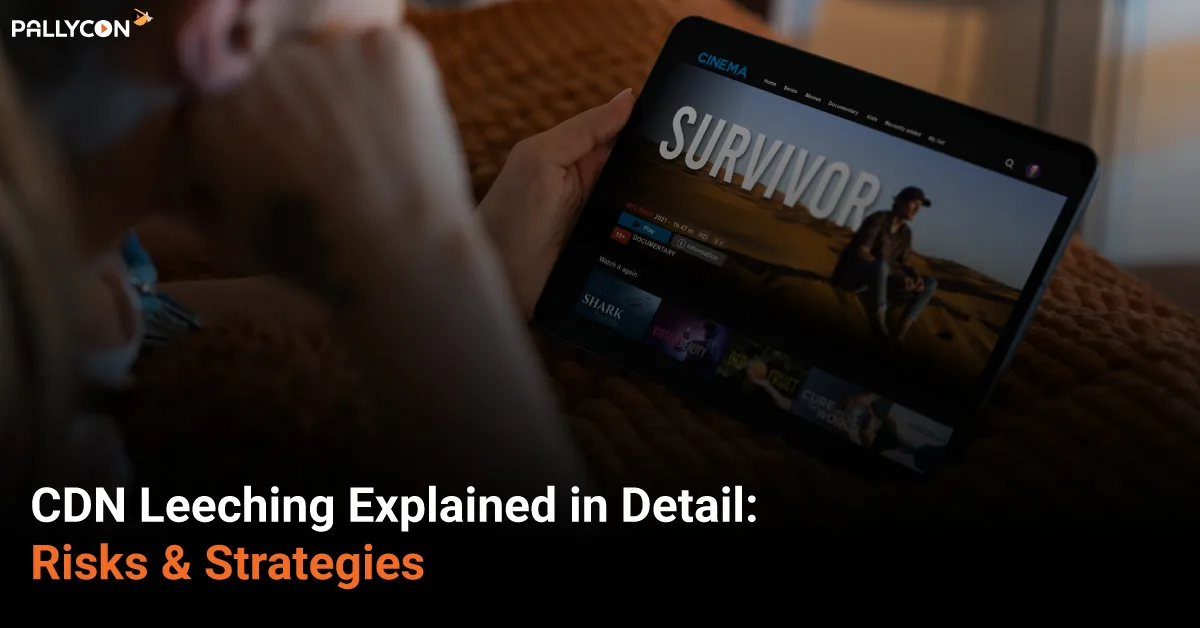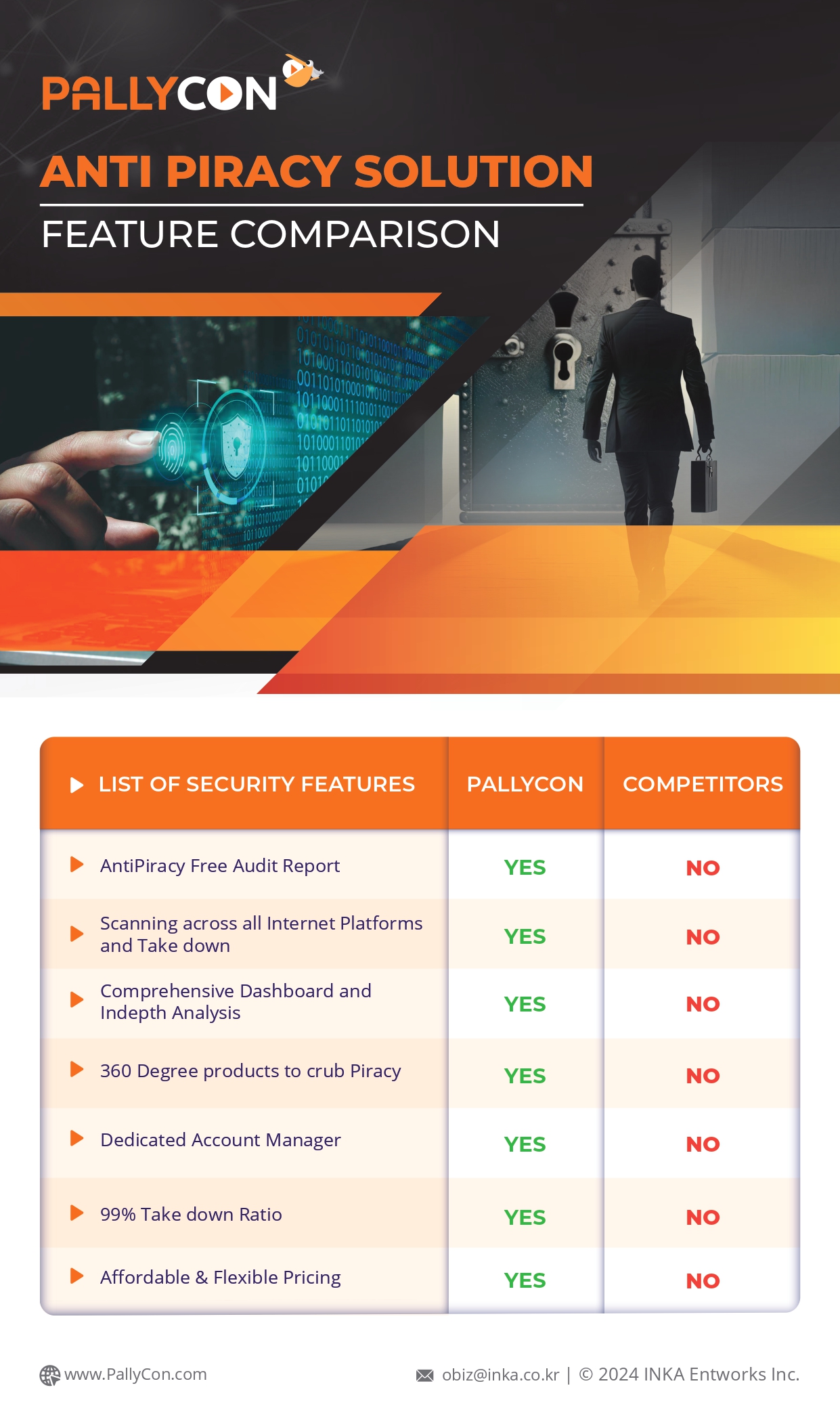
CDN Leeching Explained in Detail: Risks & Strategies
Content distributors rely on seamless and secure delivery systems to maintain their businesses. However, bad actors increasingly exploit content delivery networks (CDNs) to steal bandwidth, reroute media, and profit without authorization — also known as CDN leeching.
Online video content piracy is a significant financial threat to the global media sector. According to analyst Kearney, piracy is estimated to cost the industry $75 billion per year, with projections indicating a rise to $125 billion by 2028 at an annual growth rate of nearly 11%. The U.S. is the worst offender, accounting for 11% of all video piracy demand. These staggering losses highlight the urgent need for content distributors to address security vulnerabilities. But as more methods for video piracy come to light, it can be harder than ever to keep up.
CDN leeching is the latest growing issue that threatens not only revenue streams but also the quality of service provided to legitimate users. Understanding how CDN leeching works — and how to prevent it — can help protect revenue, infrastructure, and brand reputation.
What Is CDN Leeching?
CDN leeching refers to the unauthorized use of a CDN’s resources to distribute content without permission. Typically, “leechers” manipulate CDN infrastructure to bypass authentication mechanisms, enabling the illegal distribution of premium or restricted content. This practice is particularly rampant in industries like video streaming, online gaming, and e-learning platforms.
Bad actors use several techniques to exploit a CDN’s vulnerabilities, such as:
-
Reverse Engineering Applications :
Attackers analyze video streaming applications to extract CDN URLs and directly access content.
-
Token Hijacking :
Hackers steal or reuse authentication tokens to request and distribute content without permission.
-
Misconfigured or Exposed CDN Links :
Some providers unintentionally expose direct URLs to their CDN-hosted files, making them easy targets for leechers.
-
Traffic Rerouting :
Fraudsters embed CDN links within unauthorized platforms to offload bandwidth costs onto the original content provider while delivering pirated content.
CDN leeching is not just a technical vulnerability—it has real-world consequences that can impact the financial and operational stability of content providers. As piracy techniques continue to evolve, understanding the risks associated with CDN leeching is crucial for businesses looking to protect their assets.
Risks & Threats of CDN Leeching
Consider a small but rapidly growing streaming platform. One day, the organization notices a spike in bandwidth costs without a proportional increase in user subscriptions. While investigating, the company discovers unauthorized websites are embedding its video content using direct CDN links, bypassing the organization’s authentication measures. These pirate sites then offer premium content for free or at a lower cost, undercutting the streaming service and straining the platform’s infrastructure.
These modern piracy techniques are becoming more aggressive, but the risks and threats of CDN leeching go beyond revenue loss and into even bigger issues, such as:
1. Service Quality Degradation
As mentioned in the example above, excessive unauthorized traffic from cdn leeching strains CDN infrastructure, degrading the customer experience. This can lead to buffering, slower load times, and service outages — ultimately harming the brand’s reputation.
2. Increased Operational Costs
The unauthorized traffic also consumes CDN bandwidth, leading to inflated costs for the original content owner. CDN providers charge based on data usage, meaning the more leechers exploit a service, the higher the financial burden on content providers.
3. Legal and Compliance Issues
Unauthorized content distribution can result in legal consequences, especially for companies that fail to secure their digital assets. Regulatory bodies and copyright enforcement agencies may impose penalties on businesses whose content is pirated due to weak security measures.
4. Cybersecurity and Data Privacy Risks
CDN leeching is not just about content theft — it also exposes platforms to broader cybersecurity threats. Attackers may use compromised CDN links to distribute malware, steal user credentials, or gain unauthorized access to backend systems, leading to both a loss of brand trust as well as potential fines and other regulatory measures.
Recognizing these risks is crucial, but taking proactive steps to mitigate them is even more important. With the right strategies in place, content providers can combat CDN leeching and secure their digital assets.
Strategies for Combatting CDN Leeching
Protecting content from CDN leeching requires a multi-layered security approach. Content providers can implement the following strategies to help:
1. CDN Tokenization
By implementing URL tokenization, content providers can ensure that each request is authenticated using unique, time-limited tokens. This prevents unauthorized users from accessing and sharing CDN URLs.
2. Application Protection
Techniques like code obfuscation and anti-tampering mechanisms help safeguard applications from reverse engineering due to CDN leeching. Strengthening API security and implementing encryption can also prevent attackers from extracting CDN links.
3. Key Lifecycle Management
Regularly rotating and updating encryption keys for content access minimizes the risk of unauthorized reuse. Platforms that implement this practice alongside robust digital rights management (DRM) policies can effectively curb illicit content access.
4. Device and IP Whitelisting
Major streaming platforms combat CDN leeching by implementing dynamic IP whitelisting, ensuring only authorized regions and devices can access premium content. This technique is particularly effective for subscription-based services that need to prevent credential sharing and account abuse.
5. Hardening Software DRM
Improving DRM implementations with anti-debugging and anti-tampering features ensures attackers cannot easily bypass content protection measures. Integrating forensic watermarking can also help trace the source of leaked content.
A comprehensive security strategy that combines these methods will provide the best defense against CDN leeching, ensuring content remains protected while delivering a seamless user experience.
Adopt a Proactive Approach to Content Protection
CDN leeching is a growing challenge for digital content providers, leading to financial losses, legal risks, and degraded service quality. As piracy tactics become more sophisticated, businesses must proactively adopt security measures such as tokenization, DRM, and application hardening to safeguard their digital assets.
To stay ahead of these threats, organizations should conduct a thorough audit of their CDN security policies, implement advanced authentication mechanisms, and continuously monitor for suspicious traffic patterns. Taking these steps today will help prevent revenue loss, enhance service reliability, and ensure long-term digital content protection.
FAQs on CDN Leeching
Can CDN leeching lead to data breaches or is it just content theft?
While CDN leeching primarily involves unauthorized content access, it can also expose backend systems to cybersecurity threats. If attackers gain access to CDN configurations or authentication tokens, they might exploit other security weaknesses, leading to potential data breaches.
How often should you update security measures to prevent CDN leeching?
Security measures should be updated regularly, at regular intervals, or whenever new vulnerabilities are discovered. Continuously monitoring traffic patterns and performing security audits can help identify emerging threats.
How can I detect if my CDN is being leeched?
Look for unusual spikes in bandwidth usage, increased server load times, or unexpected traffic sources. Monitoring tools that analyze request headers and IP patterns can help identify unauthorized access and CDN leeching activities.
Can CDN leeching affect small content providers or only large streaming platforms?
CDN leeching can impact content providers of all sizes, including small streaming platforms, educational websites, and online gaming services. Smaller providers may feel the effects even more severely, as unauthorized usage can quickly lead to increased operational costs and degraded service quality.
Daniel is a DRM specialist and has been associated with this industry for over 10 years. Other than this, he is addicted to reading and writing.
